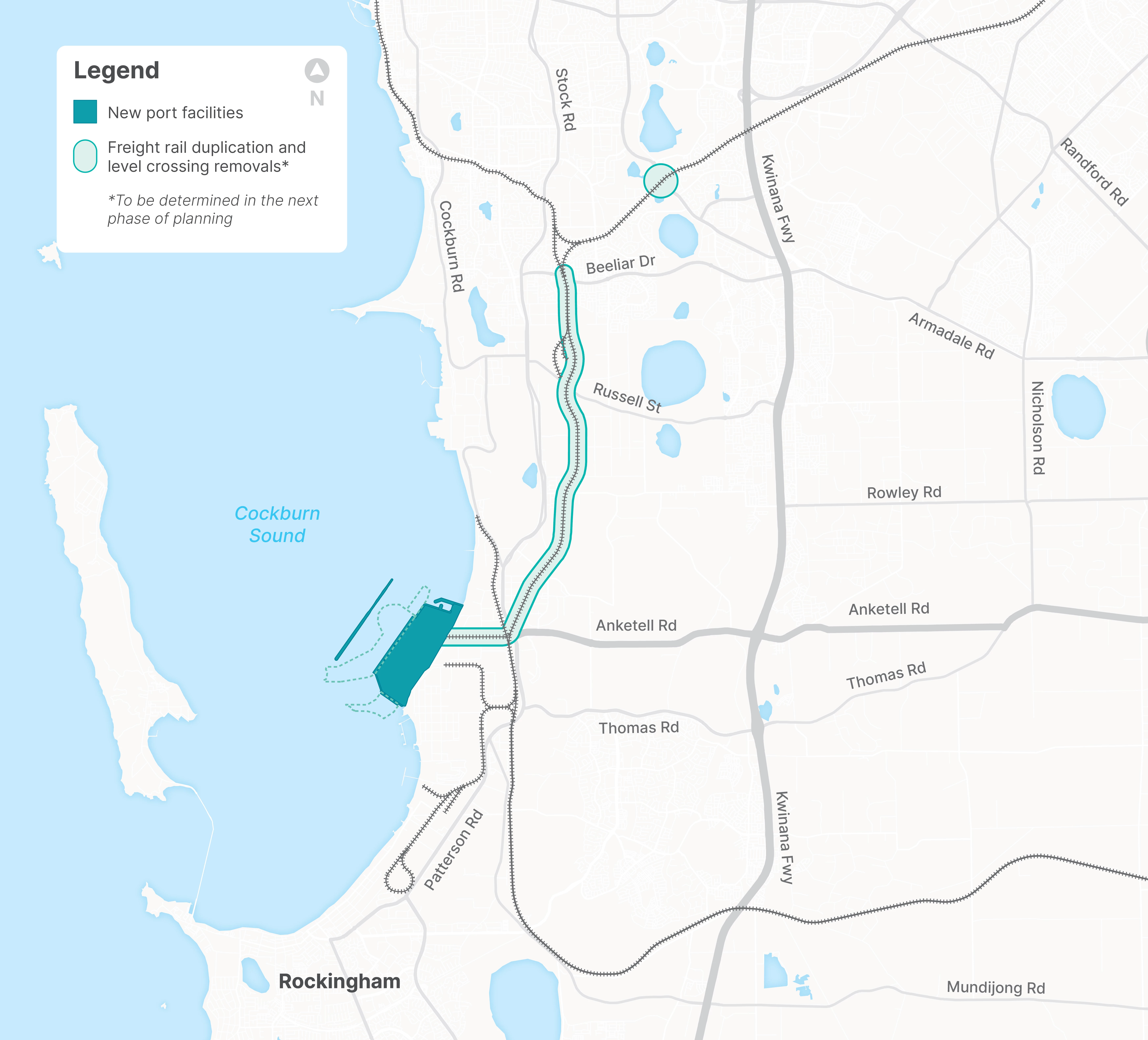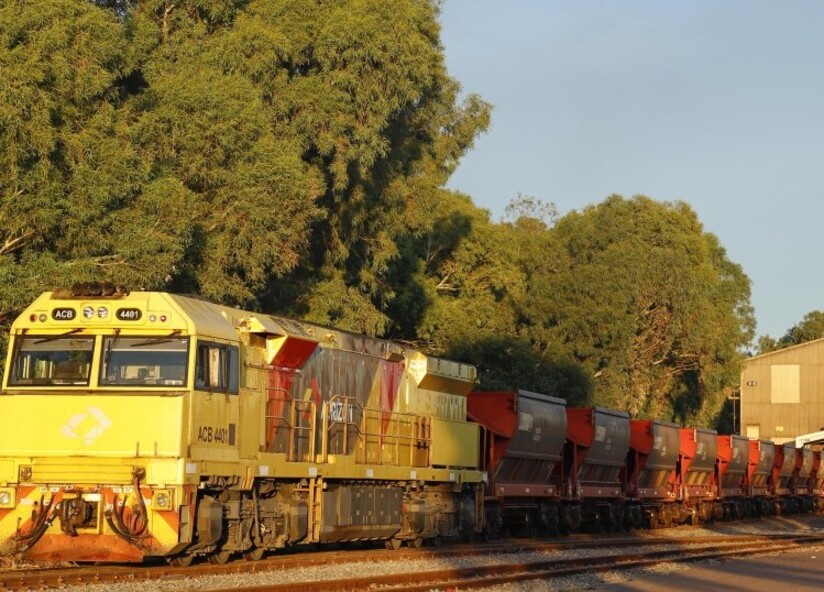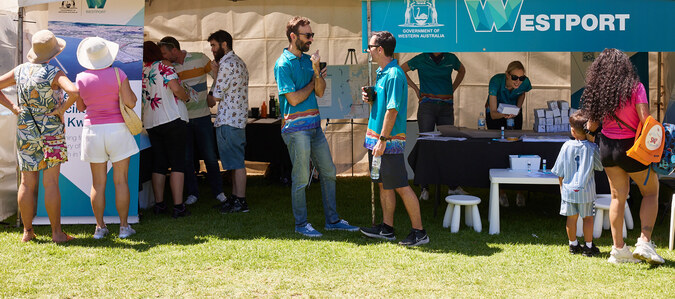The future container port and supply chain will share the freight task between road and rail networks, with an increase in the rail share.
Westport’s preferred supply chain design includes a new rail connection and targeted upgrades to the existing freight rail network, to enable an even higher commercial rail share for container distribution.

Proposed rail upgrades include:
- A semi-automated (with potential for full automation) on-dock rail head on the new container terminal.
- 5km rail connection running along the new port terminal to the existing network east of Rockingham Road. The connection will be grade separated from all other road and rail infrastructure.
- Duplication of approximately 8.4km of the freight rail line between Kwinana and the Cockburn Triangle, near Beeliar Drive in Cockburn.
- Removal of existing rail level crossings between the new port facilities and the Kwinana Freeway to facilitate safe and efficient rail freight operations, improve safety for road users and pedestrians, and reduce congestion, including the grade separation of North Lake Road and the freight rail line.
- Planning changes to clear the path for future upgrades to rail connections at the intermodal terminals (IMTs), including Kewdale, which is also the inter-state rail IMT, led by industry demand.
Freight rail currently moves around 20 per cent of shipping containers through the Inner Harbour in Fremantle. This is the highest rail mode share in Australia.
Fremantle Inner Harbour port currently handles about 850,000 Twenty-foot Equivalent Units (TEU) per year, which results in around four to five trains (roundtrips) on an average day. Without additional infrastructure upgrades, Fremantle’s single-line freight rail network will reach capacity by the mid-2030s, with limited options to increase Fremantle’s freight rail capacity in the long term.
By moving container trade to the Kwinana Outer Harbour, we have an opportunity to improve the connectivity of the freight rail network to the new port and increase the overall percentage of containers on rail.
Preliminary modelling suggests that a 30 per cent rail mode share can be achieved, which together with forecast increases in trade would result in around six to seven trains on an average day (roundtrips) in the late 2030s, the expected timing for the port to commence operations.
Safe and efficient crossing for pedestrians and cyclists is a key consideration of the rail upgrade and level crossing removals planning process. Exact details of pedestrian crossings will be confirmed during the next stage of planning and development in consultation with key stakeholders and the community.
Noise impacts for new or upgraded freight rail lines are managed according to the Western Australian Planning Commission State Planning Policy 5.4 Road and Rail Noise. This process includes detailed noise assessments, community engagement, and the delivery of any mitigation measures.
The next stage of planning for the rail upgrades will include:
2025 - 2026
- Procurement of a rail project design team
2026
Rail project design team begins multi-year “definition stage” activities, including:
- Community and stakeholder engagement
- Geotechnical and environmental site investigations
- Detailed engineering design and construction planning
- Determination of noise mitigation requirements
Late 2020s / early 2030s
- Construction is likely to commence following a final investment
Late 2030s
- New port and rail upgrades are operational

Westport Freight Rail Upgrades Project consultation
Community consultation will commence in late 2025/early 2026, during the definition phase of the rail upgrades project.
Register your interest and complete our community consultation planning survey.


